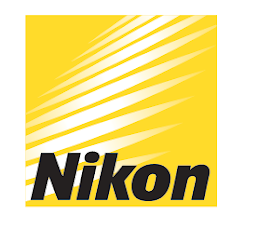
As if photography wasn't confusing enough what is with all the letters in the names of lenses these days. Now you have nearly the entire alphabet included in a product name. So here is a list to help clear a few things up.
Non – AI Lenses - AI stands for Aperture Indexing (or Automatic maximum aperture Indexing). Non-AI lenses are old bayonet mount lenses that do not offer the ability to meter with the aperture wide open and in fact cannot be fitted to modern (and not so modern) cameras. These lenses can be modified to become…
AI Lenses- AI allows you to perform metering with the lens wide open at it's maximum aperture (so you can see to focus with the screen at it's brightest) - then as the shutter is released, the lens "stops down" to give the correct aperture.
AIS - Automatic Index Shutter. These lenses have a grove in the barrel to tell the body that the aperture is linear so it can be used for Program and Shutter priority modes.
PC - Perspective Control- The first of this type was the 35mm f/3.5 PC introduced in 1963. It allows the camera to stay parallel with the subject. These are non-AI so will not meter with the majority of digital bodies.
AF- Auto Focus. Nikons first series of Auto Focus lens. This is possibly the only nomenclature that is common across all lens manufactures.
AF "D" Lenses take into account Distance into the exposure equation. This works for normal ‘ambient’ exposures as well as calculating flash to subject distance. All recent Nikkor lenses are D series.
AF-S or AFS lenses contain a Servo motor in the lens to drive the focusing. This is instead of the camera body driving them. Having a motor in the lens creates a faster, quieter focusing lens that even uses less power! The D40 lacks a focus drive in the camera and therefore will only accept AF-S lenses.
VR and now VRII is Nikon’s in lens Vibration Reduction system equivalent to Canon’s Image Stabilized (IS) lenses. This helps reduce camera shake allowing sharper images at lower shutter speeds.
G series lenses lack an aperture ring on the lens. The aperture must be controlled with the camera body. These lenses are compatible with all camera from the late 90s onwards only (F5 F100 onwards).
DX lenses are designed with a smaller image circle specifically for smaller sized digital sensors.
DC - Defocus Control - the ability to control what zones are in or out of focus, handy for portraiture and that’s about it.
IF - Internal Focus lenses are self-contained and do not change size when focused.
LD/ED/UD - Low/Extra low/Ultra low Dispersion - Special glass that doesn't disperse the light as it enters the lens. Usually encountered on later model telephoto lenses.
N Nano coated lenses are Nikons newest coating for internal elements to reduce flare and ghosting from light bounced around inside the lens
Micro - What everyone else in the world refers to as macro, a lens capable of focusing to life size without extension tubes.
CRC - Close Range Correction - Lens adapted to reduce distortion when focused at macro lengths.
NOCT - Nocturnal - The Nikkor AIS Noct 58mm f/1.2, a "fast" lens (wide aperture), with aspherical elements, capable of photographs in very low light
UV - Special lenses designed to pass ultra-violet light.
UW - Special lenses designed for the Nikonos underwater camera system
Not all of these codes are in use today but should give you a good idea of what is around especially if you are looking at second hand glass.
And if you are looking for the ultimate lens for wildlife and landscape work that focuses down to life size has internal, fast, focusing, multi coating to reduce flare, and with vibration reduction you would be looking for something with a name like...
AF-S 18-500mm f/2.8G IF-ED Micro Zoom Nikkor VRII N.
Have Fun!
Friday, 23 November 2007
Nikon Nomenclature
Subscribe to:
Post Comments (Atom)

1 comment:
Hi Craig!
Thanks a lot, great post.
Andy S
Post a Comment